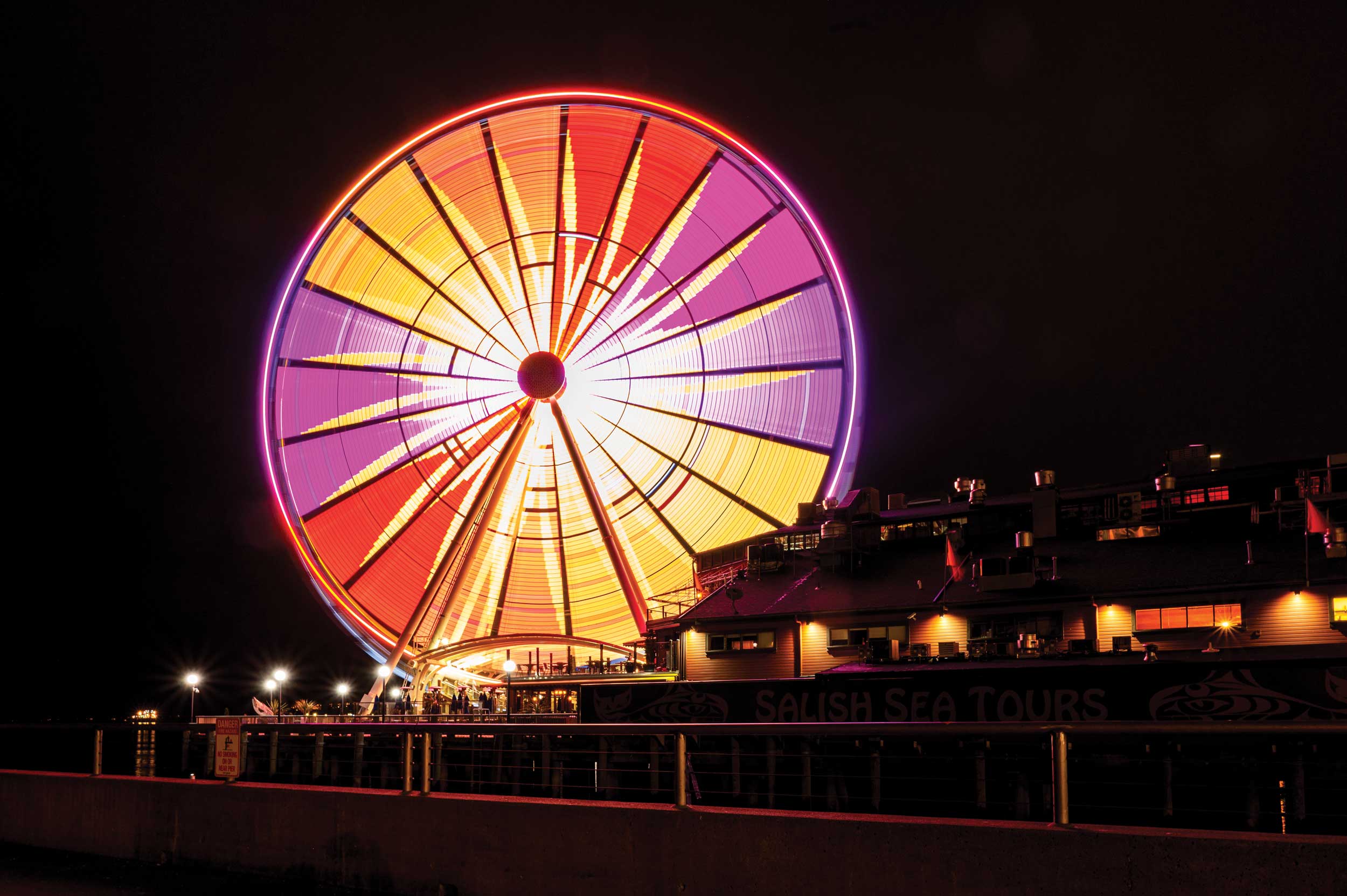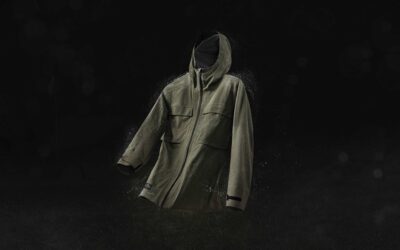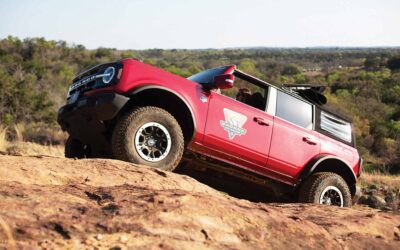Known for being the home of jet airplanes, grunge rock, a certain well-known coffee brand, and lots of rain, there’s actually a great deal more to Seattle than the greatest hits the city is most famous for.
While winters can trend pretty grey and misty, they’re also what makes Seattle’s oft-used Emerald City moniker so apt. The city is abundant with greenery, from tall pines to broad oaks and creeping foliage, some even in the midst of the urban core. The city seems almost built to withstand these sodden days and long, dark nights with a range of galleries, live music performances, quirky bars and restaurants serving the best northwest cuisine—mostly sourced locally.
In the summer, however, the attraction is all-natural. Long, sunny days illuminate the fantastic scenery to be had from any vantage point. The Cascade mountains to the east, the Olympic mountains across Puget Sound to the west. Perhaps the most famous mountain view from the city is the one locals mean when they say “the mountain is out” is Mount Rainier (known in the indigenous Lushootseed language as Tahoma), a 14,000 foot dormant volcano which looms over the region to the south.
With environs like these, any hotel room in Seattle is bound to have a pleasant view, but the Four Seasons Seattle, perched just above the waterfront, has a particular embarrassment of riches. Many of the city’s hotels rooms have views of Puget Sound and the Olympic mountains, right over the waterfront piers and the Seattle Great Wheel. Guest rooms here are bathed in neutral tones, allowing the views through the floor-to-ceiling windows to be the primary decorative features. That’s not to say guests won’t appreciate the marble bathrooms with roomy rainfall showers and deep soaker tubs.
Guests will also enjoy views from the year-round outdoor pool and hot tub, or from Goldfinch Tavern, where a popular chef’s tasting menu showcases fresh ingredients from around the region, like oysters, salmon, and mushrooms foraged from the foothills of the Cascades.
Even closer to the waterfront is the Edgewater Hotel, which is actually built on a pier over the waters of Elliott Bay. Built for the 1962 Seattle World’s Fair, the hotel was initial expected to be temporary, but it rocketed to fame after the Beatles stayed there in 1964 after no other hotel in the city could get enough insurance to cover the pop stars. A photo of them fishing out of the hotel’s guest rooms (fishing equipment was provided as an amenity at the time) famously appeared on the cover of Life Magazine and the hotel soon became the choice for visiting and local music acts.
Today, the Edgewater retains the Beatles Suite, complete with Beatles-themed décor, and guests in other rooms can borrow guitars, sheet music, and record players to complete their rock-themed hotel experience. At the hotel, Six Seven Restaurant & Lounge offers diners those same waterfront views with plenty of fresh northwest seafood and other culinary delights (the clam chowder is a particular must-try).
Seattle is also a haven for sports fans, with two major stadiums clustered near each other on the south side of town. Lumen Field, home to the Seattle Seahawks football team and Seattle Sounders soccer team features skyline views of the city. The neighboring T-Mobile Park is home to the Seattle Mariners baseball team.
After a game, stop into 13 Coins Restaurant for classic-but-upscale diner fare in one of the tall tufted leather booths or large swiveling captain’s chairs at the bar of the open kitchen to watch the line cooks banter as they grill steaks, toss pasta, or steam clams. Another spot to stop into in the area is the observation deck at Smith Tower which was one of the tallest buildings outside New York City when it was completed in 1914. The elevator ride to the top winds through a small exhibit about the history of the tower and surrounding neighborhood. Having taken in the views, the bar is a prime spot for a sunset cocktail.
The stadiums also sit near Seattle’s International District. Previously known as Chinatown, the scene here now is certainly more Pan-Asian. Uwajimaya, a grocery store started by a Japanese family that now has locations across the Northwest, is a haven for seafood and all types of Asian foodstuffs—and there are popular local lunch counters and takeout kitchens just inside. Visitors can also stop into the Rem Koolhaas-designed Seattle Public Library to browse Northwest periodicals and maps on their way back north.
Pike Place Market is one of the city’s prime visitor attractions, but it’s also still a place where locals will do their own shopping for fresh northwest produce and seafood. For visitors there are also a number of artisans selling their wares, both on the main market floor and in storefronts throughout the multiple levels of the building. Visitors will find the Athenian Seafood Restaurant & Bar right in the middle of the market, a restaurant dating back to 1909 that still notes with brass placards the bar stools occupied by Tom Hanks and Rob Reiner in the film Sleepless in Seattle.
Visitors wanting to get in on some of the fish-slinging action can, and they can take their fresh seafood home with them. Many of the seafood vendors in the market will pack fish and shellfish “to-go” – in sealed Styrofoam and cardboard boxes suited for airline travel. Fish will stay fresh and chilled for around 24 hours of travel time.
Fancy some inventive cocktails? Try Navy Strength in Belltown for tiki drinks and bearded bartenders flitting around the bar in colorful romper-style jumpsuits. For something a bit more bespoke, make reservations at Needle & Thread a menu-less speakeasy-style bar inside Tavern Law (which does have a menu, and it’s lovely) on Capitol Hill. At Needle & Thread, bartenders have conversations with guests upon arrival about their preferences, then fashion a tipple designed to suit their tastes.
The Space Needle needs no mention as Seattle’s most recognizable landmark, but the nearby Chihuly Garden & Glass has become just as popular a visitor attraction for glasswork by Seattle artist Dale Chihuly. At Seattle Center’s Climate Pledge Arena where the local NHL team the Seattle Kracken takes the ice.
Visitors may also wonder the best way to get out on the water, as the city seems almost surrounded by it. The quickest and most affordable way to take to the sound is the way thousands of Washington State residents do every day—onboard the ferry. The fare is just over $9 for a walk-on passenger. The benefit is spectacular views of the city skyline and Mt. Rainier during the crossing, plus the charming community of Bainbridge awaiting at the other end—good for a few hours walk and some shopping and dining.
However visitors to Seattle choose to spend their time—during whatever season, they’re sure to encounter the hidden bounty of the Northwest. Here’s a land that seems to do all its environs exceptionally well, from ocean to mountain to lake to river—in spite of being a region oft-written off as being rainy or cold. In fact, it’s as close to temperate paradise as one might find on any side of the North American continent.
By Scott Laird



